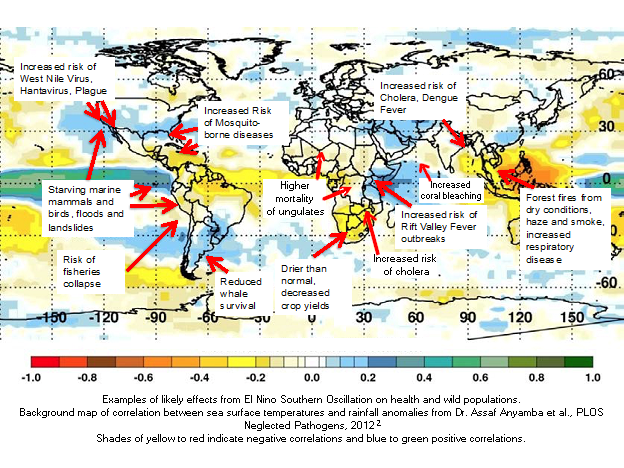
1 Aug 2023 (France) – The Pacific Ocean becomes 3 degrees C warmer than usual every two to seven years (known as the “El Niño” event), followed by a corresponding cooling period (“La Niña”), as part of a phenomenon known as the El Niño Southern Oscillation (ENSO), with some months of neutral conditions in between events. ENSO can have short-term extreme effects on weather patterns resulting in departures from normal rainfall, ocean and land temperature and ecological conditions globally.
Analyses have shown that disease outbreaks follow these extreme shifts, illustrating that extreme ends of the moisture spectrum (both wetter and drier) provide favourable ecological conditions for arthropod vectors and human and animal pathogens to emerge and propagate clusters of diseases.
The WOAH Working Group on Wildlife has released a statement further detailing the phenomenon and its relevance and impact on animal health, as well as possible appropriate responses.
extreme [weather pattern] shifts, illustrating that extreme ends of the moisture spectrum (both wetter and drier) provide favourable ecological conditions for arthropod vectors and human and animal pathogens to emerge and propagate clusters of diseases.



